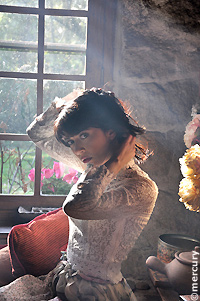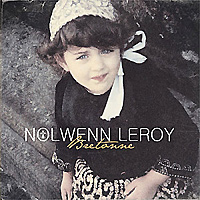Nolwenn Leroy: Bretonne triumphs
Traditional songs make surprise hits
Paris
26/01/2011 -
With a collection of classic numbers sung in Breton, French and English, Nolwenn is once more enjoying the taste of success after the pop intermission of her previous album.

It may be a well-known fact that Nolwenn Leroy is from Brittany, but no one could have imagined the shock of Bretonne. Her fourth album, featuring major classics from or inspired by Brittany, is in the process of becoming one of the biggest record successes of the season.
Unexpected turning
She claims she had been thinking of plunging into a Celtic repertoire for some time. Not such a surprising move for a native of the French equivalent of Land’s End, Finistère, but few can have imagined hearing her sing Tri Martelod, the classic Breton song by Alan Stivell, or Bro gozh va zadoù, Brittany’s “national anthem”.
Number one
Yet, despite a few acerbic remarks here and there about the obviousness of the success, it is a surprise to most. A surprise that can be explained, but that remains exceptional in the context of a depressed music market. For a comparison, you’d probably have to go back to the thousands of copies sold between 1994 and 1998 of the four albums by Dan Ar Braz and l’Héritage des Celtes.
Trad modern

In fact, Nolwenn Leroy was intending to produce more of a pop album than a “trad” album, since she called on the services of Jon Kelly, who had previously worked with people like Kate Bush, Duffy and Paul McCartney. The repertoire is not only given over to traditional ditties in Breton and French – she has also chosen to interpret songs that evoke Brittany, like Brest by Miossec (2004), Ma Bretagne quand il pleut by Jean-Michel Caradec (1977) and Le Bagad de Lann Bihoué by Alain Souchon (1978), and asked two contemporary Bretons, Christophe Miossec and Didier Squiban, to write her a new song to express how attached she is to her homeland, Je ne serai jamais ta Parisienne (I’ll never be your Parisian girl).
With touches of traditional Celtic instruments, and an omnipresent warm, romantic voice, Bretonne is both linked to regional culture and firmly in line with the sounds of present-day pop. Bretonne is certainly Breton, and sometimes sung in the language of the land, but it is above all French chanson. And it is doubtlessly the way it straddles the two cultures that gives it so much charm.
Suite Sudarmoricaine
Bertrand Dicale
Translation : Anne-Marie Harper













